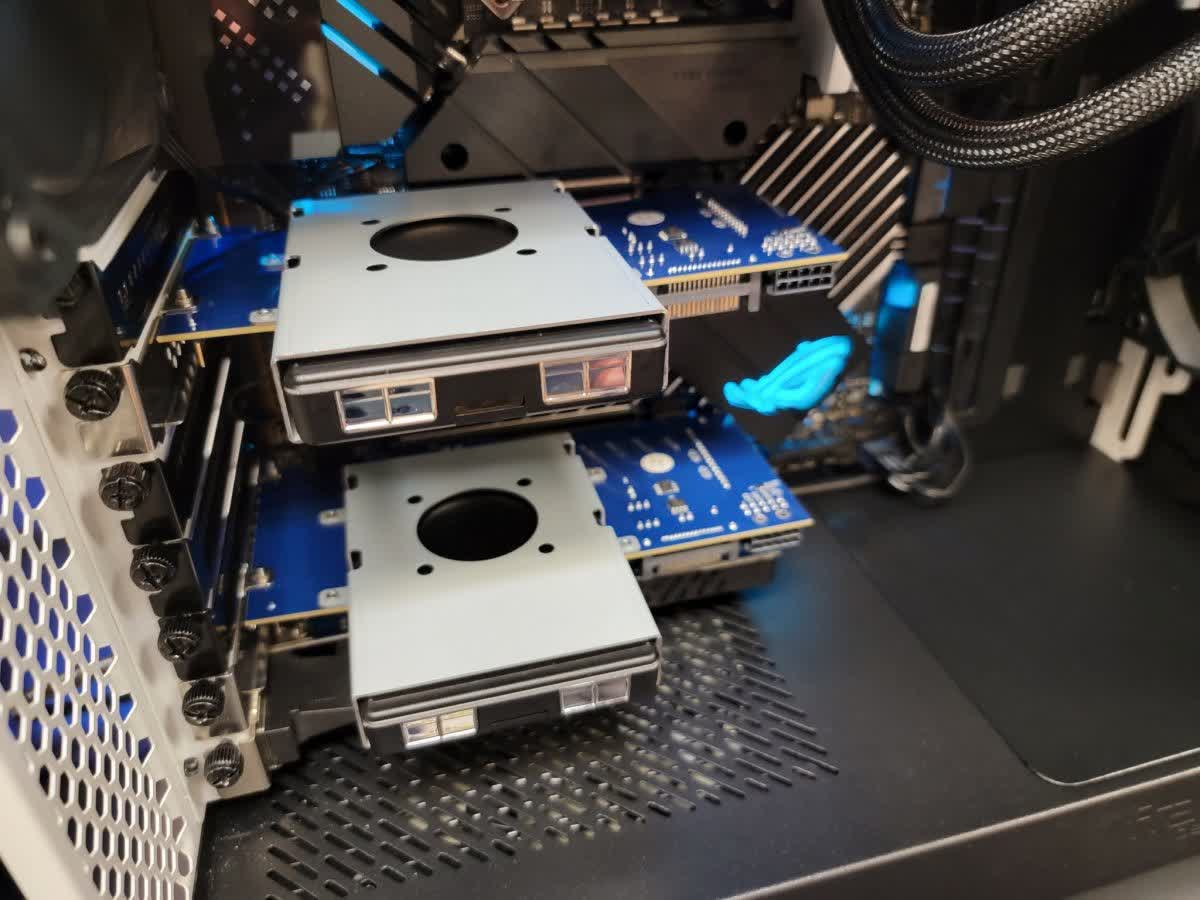What just happened? Just as more people are buying PCIe 4.0 SSDs, next-generation PCIe 5.0 storage is making headlines. The latest reveal comes from Intel’s Chief Performance Strategist and former tech journalist Ryan Shrout, who showed off a PCIe Gen 5 Samsung SSD running on an Alder Lake system and hitting some impressive speeds.

Shrout tweeted that the PCIe 5.0/Alder Lake demo was supposed to be part of Intel’s CES 2022 lineup, but with Chipzilla joining so many others in announcing that it will be severally limiting its physical presence at the show and going mostly virtual, we got to see the SSD in action a week early.
Shrout’s system comprises a 12th-gen (Alder Lake) Intel Core i9-12900K, an Asus Z690 motherboard, and an EVGA RTX 3080 graphics card. It’s a pretty standard high-end rig, apart from the Samsung PM1743 PCIe 5.0 SSD. The Gen 5 SSD is an enterprise-class drive, meaning the final consumer model will look different.
Perks of the job! Was going to save this demo for #CES2022 but with that off the table, why not just share it with everyone right now?! Here’s a 12th Gen @intel Core i9-12900K system paired with a new @Samsung PM1743 PCIe 5.0 SSD getting over 13GB/s!! pic.twitter.com/oyL08KzDtV
— Ryan Shrout (@ryanshrout) December 30, 2021
The demo begins by confirming the speed of a top-end WD Black PCIe 4.0 SSD, which reaches close to 7GB/s. That’s fast by anyone’s standards, but the Gen 5 Samsung SSD, which is connected via a PCIe 5.0 interposer card, is almost double the speed of the Gen 4 drive, reaching around 13.8GB/s.
In addition to those speeds, Samsung says that the PM1743 has around 30% better power efficiency (608MB/s per watt) than PCIe 4.0 drives. This enterprise version will arrive in 2022 with capacities ranging from 1.92TB to a massive 15.36TB and in 2.5-inch and 3-inch form factors.
A few asked why we didn't show both of the PCIe 5.0 drives running at the same time. Fine @IanCutress here you go. Addressing them independently in IOmeter for a combined bandwidth over 28 GB/s!! https://t.co/107wlJ4wit pic.twitter.com/c8fecGkxli
— Ryan Shrout (@ryanshrout) December 30, 2021
In a separate tweet, Shrout also showed two PM1743 drives running simultaneously, giving a combined speed of over 28GB/s, though the limited number of PCIe 5.0 lanes meant the graphics card had to be removed.
Earlier this week, we saw this active cooler designed to keep PCIe 4.0 and PCIe 5.0 NVMe M.2 SSDs temperatures down and stop them from thermal throttling. These robust solutions may be necessary for Gen 5 drives such as the PM1743 and Adata’s ‘Project Nighthawk.’
https://www.techspot.com/news/92814-intel-shows-off-alder-lake-system-pcie-50.html